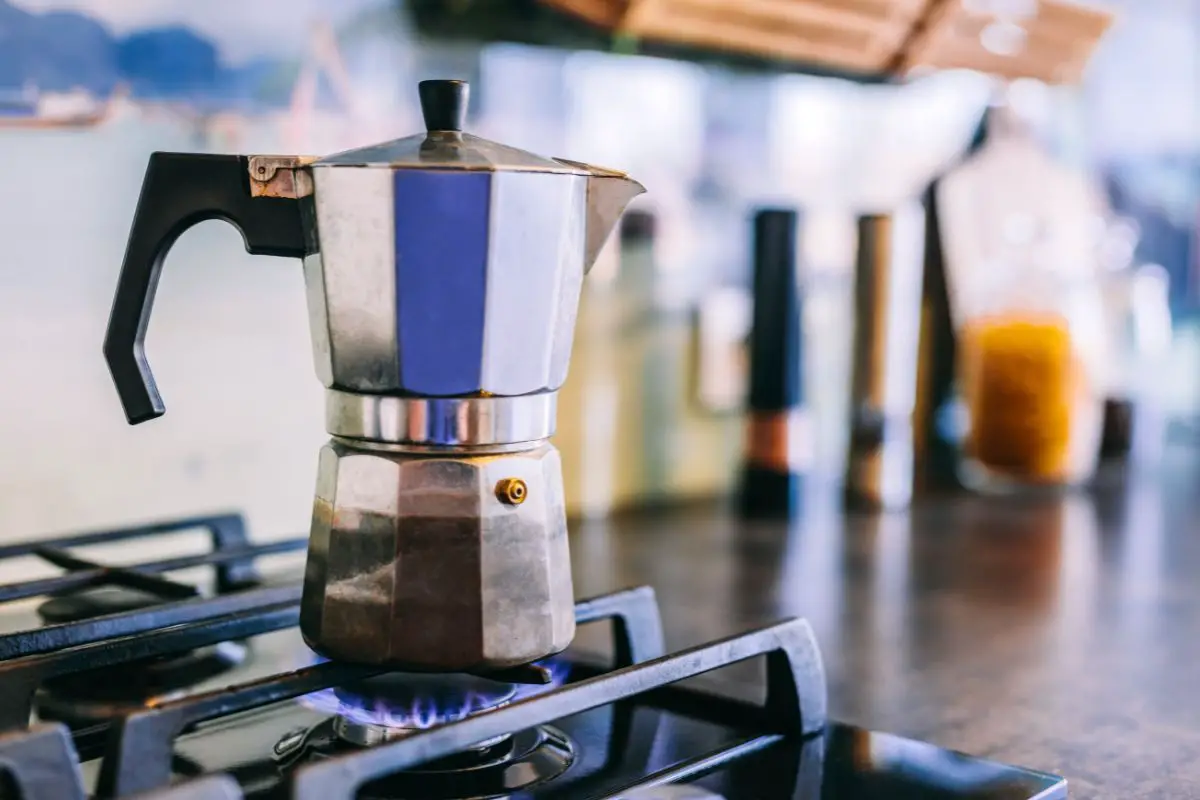If you love espresso, you have a shot or two each day. The dream of every espresso drinker is to have an espresso machine in their home. These coffee beverages make the perfect pick – me up when you wake up or in the afternoon when you feel sluggish.

The only problem is that Espresso machines are expensive. They are also large and unnecessary to have in a small kitchen unless you make espresso for several people daily.
So how do you prepare your beloved espresso from home without buying a large espresso machine? A stovetop espresso maker is an ideal solution.
Also known as a moka pot, this small two-piece kettle perfectly fits any kitchen. It’s the ideal coffee maker to use if you want to prepare fragrant espresso coffee in minutes. But what if you need a milky espresso drink?
Can You Prepare Stovetop Espresso with Milk?
Since espresso is such a dark and boldly flavored coffee drink, most people like to take it with a dash or two of milk.
Others prefer espresso beverages, such as cappuccinos, that require frothy milk to give their coffee a velvety mouthfeel. These people miss using an espresso machine with a steam wand to steam their milk when preparing espresso.
There are also those who prefer to brew espresso with milk in a moka pot to save them the extra time required to prepare milk on the side. But this sometimes proves difficult.
Why It’s Hard To Make Milky Espresso Coffee in a Moka Pot?
There are several reasons it’s not easy to make stovetop milky espresso beverages. These are;
- The space left after filling the moka pot with hot water and coffee grounds is not enough to hold milk. And you need quite a bit of milk to prepare a nice cup of milky cappuccino or a latte.
- Milk sometimes scalds the bottom of the moka pot during coffee brewing, giving the coffee a horrible taste and smell. This happens because most moka pots are made using stainless steel or aluminum.
- An expert coffee maker will also tell you that milk increases the pressure in a stovetop espresso maker. This pressure creates the potential for your moka pot to explode as you brew coffee.
- There is also the fact that milk is less effective at extracting coffee from coffee grounds than hot water. The compounds in it, like sugar, fats, magnesium, and calcium, interfere with the extraction process reducing the flavor of the beverage you get.
- And lastly, when you add milk to a moka pot, you create an environment for mold to grow after a few brewing cycles. This happens because the lactose and fats in milk get stuck to the sides of the pot during brewing making it hard to clean the pot.
So do all these things mean making milky espresso beverages in a moka pot is impossible?
No. While your espresso coffee with milk will not have foam, it will have a creamy consistency if you prepare it right. You only need to use milk with the right fat content such as whole milk and brew your coffee at the correct temperature to give it a velvety texture.
There are also stovetop espresso makers specially made to brew espresso with milk that you can buy. Some good examples are the Bialetti Mukka Express and the Bialetti Kremina.
Otherwise, if you choose to use a regular stovetop espresso coffee maker, there is a simple recipe you can follow. If you use it, you’ll get a milky cup of coffee that reminds you of your favorite cappuccino or cafe – con – leche. Here it is.
How to Prepare Milk in a Stovetop Espresso Coffee Maker
- Grind fresh coffee beans in a grinder. The best size of coffee grounds to use is a fine grind that feels like table salt when rubbed between your fingers.
- Pour enough hot water into the moka pot to make the amount of espresso coffee you want. You must use hot water to ensure you brew your coffee in the shortest time possible to keep it from getting bitter.
- Make sure the water in the moka pot does not go past the line that marks the maximum amount of water you should use to brew coffee in the pot.
- Scoop enough coffee grounds into the moka pot funnel to get to the rim and level them with a finger to remove any excess grounds.
- Screw the top of the moka pot on and place it on the stove. Light the stove and percolate the moka pot on low heat. Make sure you open the lid of the moka pot after a minute to keep an eye on the level of the water as it heats up.
- Once the coffee starts to steam, gurgle, and release a yellowish foam at the top, take the moka pot off the stove.
- Pour the coffee into espresso cups immediately to keep it from getting bitter, and enjoy your flavorful cup of espresso.
Conclusion
Now you know how to put milk in a stovetop espresso maker to prepare your favorite espresso milk beverage. These instructions are pretty simple to follow.
However, if preparing a milky espresso beverage in a regular moka pot is complicated, you can always buy those made for brewing coffee with milk. These are the Bialetti Mukka and Bialetti Kremina we’ve suggested here.
Otherwise, if you use our recipe for brewing milky espresso in a moka pot, you’ll see it’s easy to use milk in a stovetop espresso maker.
Related article: